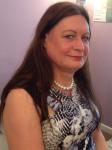AES Dublin 2019
Tutorial T36
Saturday, March 23, 15:00 — 16:30 (Liffey Hall 1)
T36 - Modern Sampling Part 2: Sparse/Compressive Sampling/Sensing
Presenter:Jamie Angus-Whiteoak, University of Salford - Salford, Greater Manchester, UK; JASA Consultancy - York, UK
Sparse and Compressive Sampling allows one to sample the signal at apparently less than the Nyquist/Shannon limit of two times the highest frequency, without losing any signal fidelity. If some loss of fidelity is allowed the signal can be sampled at an even lower average rate. How can this be? The answer is that the effective information rate is actually lower than the highest frequency.
The purpose of this tutorial is to give a (mostly) non-mathematical introduction to Sparse/Compressive Sampling. We will examine the difference between “Sparse” and “Dense” signals and define what is meant by “rate of innovation” and see how it relates to sample rate. We will then go on to see how we can create sparse signals either via transforms or filters to provide signals that can be sample at much lower rates. We will then show how some of these methods are already used in audio, and suggest other areas of application, such as measurement. Finally we will finish off by showing how a commonly used audio system can be considered to be a form of compressive sensing.
 | This session is presented in association with the AES Technical Committee on High Resolution Audio |

